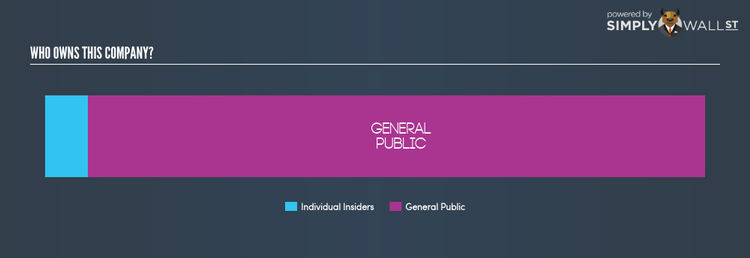Who Owns Frontera Resources Corporation (LON:FRR)?

In this article, I will take a quick look at Frontera Resources Corporation’s (AIM:FRR) recent ownership structure – an unconventional investing subject, but an important one. A company’s ownership structure is often linked to its share performance in both the long- and short-term. Since the effect of an active institutional investor with a similar ownership as a passive pension-fund can be vastly different on a company’s corporate governance and accountability of shareholders, investors should take a closer look at FRR’s shareholder registry.
See our latest analysis for Frontera Resources
Insider Ownership
Insiders form another group of important ownership types as they manage the company’s operations and decide the best use of capital. Insider ownership has been linked to better alignment between management and shareholders. FRR insiders are also influential stakeholders with 6.62% ownership in the company. This level of stake with insiders indicate highly aligned interests of shareholders and company executives. However, it would be interesting to take a look at their buying and selling activities lately. Buying may be sign of upbeat future expectations, but selling doesn’t necessarily mean the opposite as the insiders may be motivated by financial needs or they are simply diversifying their risk.
General Public Ownership
A big stake of 93.38% in FRR is held by the general public. This size of ownership gives retail investors collective power in deciding on major policy decisions such as executive compensation, appointment of directors and acquisitions of businesses. This level of ownership gives retail investors the power to sway key policy decisions such as board composition, executive compensation, and potential acquisitions. This is a positive sign for an investor who wants to be involved in key decision-making of the company.
Next Steps:
A relatively significant holding of company insiders could mean high alignment with shareholders. But at the same time, investors should be aware of the level of influence executives could have on governance decisions. However, if you are building an investment case for FRR, ownership structure alone should not dictate your decision to buy or sell the stock. Rather, you should be examining fundamental factors such as Frontera Resources’s past track record and financial health. I highly recommend you to complete your research by taking a look at the following:
Financial Health: Is FRR’s operations financially sustainable? Balance sheets can be hard to analyze, which is why we’ve done it for you. Check out our financial health checks here.
Past Track Record: Has FRR been consistently performing well irrespective of the ups and downs in the market? Go into more detail in the past performance analysis and take a look at the free visual representations of FRR’s historicals for more clarity.
Other High-Performing Stocks: Are there other stocks that provide better prospects with proven track records? Explore our free list of these great stocks here.
NB: Figures in this article are calculated using data from the last twelve months, which refer to the 12-month period ending on the last date of the month the financial statement is dated. This may not be consistent with full year annual report figures.
To help readers see pass the short term volatility of the financial market, we aim to bring you a long-term focused research analysis purely driven by fundamental data. Note that our analysis does not factor in the latest price sensitive company announcements.
The author is an independent contributor and at the time of publication had no position in the stocks mentioned.

 Yahoo Finance
Yahoo Finance 
